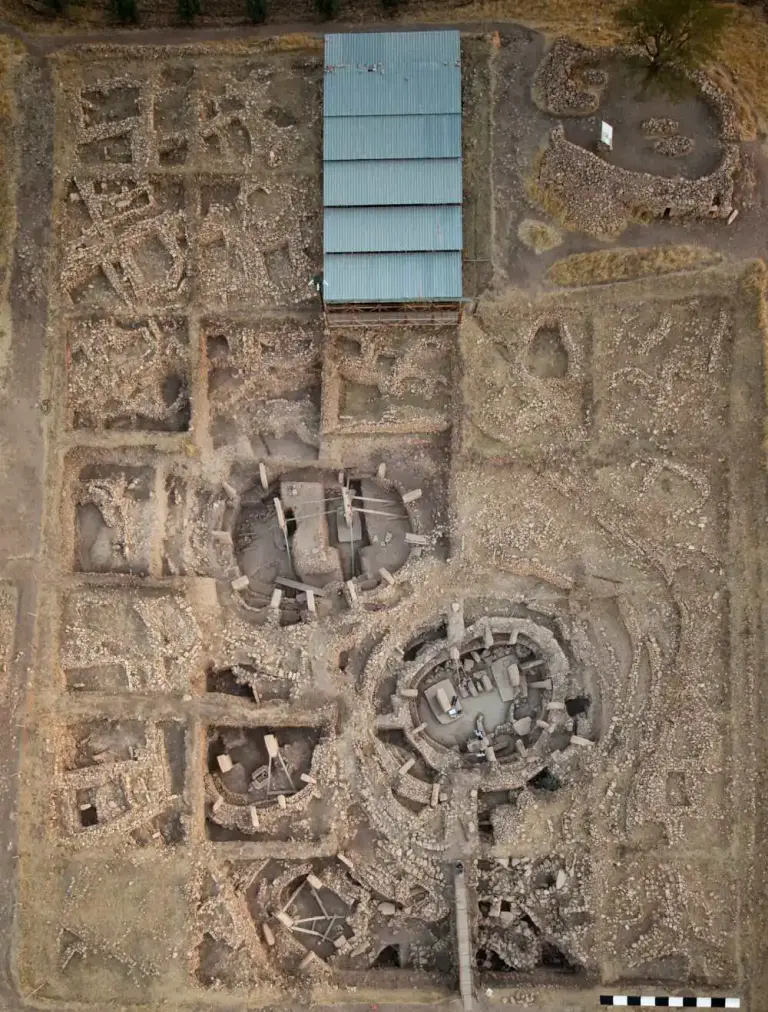Göbekli Tepe, known as the oldest temple in the world, dates back to approximately 11,500 years ago, which is 7,000 years older than Stonehenge. This site is located on a limestone hill in Southeastern Anatolia, Turkey, near the city of Şanlıurfa. It is believed to have existed when mammoths still roamed the Earth, and Britain was not yet separated from the European continent.


Discovery Process
In 1963, scientists from Istanbul University and the University of Chicago first discovered ancient stone tools and large stone slabs at Göbekli Tepe hill. However, no excavations were conducted at that time. It was not until 1994 that German archaeologist Klaus Schmidt returned to the area and concluded that the hill might conceal significant ancient ruins. A year later, the official excavation began, revealing T-shaped pillars, large circular structures, and monumental buildings from the Neolithic era.

Unique Architecture
The stone structures at Göbekli Tepe include giant T-shaped pillars up to 5.5 meters tall, intricately carved with images of animals like snakes, foxes, boars, and even humans. These sculptures reflect the complex artistic and religious practices of ancient people. Additionally, archaeologists have found carved skull fragments along with many statues and headless human figures, suggesting the presence of a prehistoric skull cult.

Mystery of the Society That Built Göbekli Tepe
Göbekli Tepe was built before humans settled into agricultural societies, raising the question: How could a hunter-gatherer society organize the construction of such complex structures? Recent research from Tel Aviv University indicated that the stone pillars here were arranged according to precise geometric patterns. Scientists found that when the center points of three stone circles were connected, they formed an almost perfect equilateral triangle. This implies that the builders had applied geometric principles and had detailed architectural plans.


Role of Geometry and Social Organization
Research on Göbekli Tepe shows that the society at the time underwent significant architectural transitions, from circular to rectangular structures, requiring a high level of expertise. Gil Haklay, an archaeologist with the Israel Antiquities Authority, noted that these constructions resulted from top-down organization, reflecting cooperation and long-term planning—uncommon among hunter-gatherer societies.

Controversies and Unanswered Questions
Determining the age of Göbekli Tepe and the lack of evidence of nearby agriculture have sparked much debate. Some researchers suggest that the construction of the temple may have led to agricultural settlement, rather than the reverse. Moreover, although the equilateral triangle was discovered among the three stone circles, there is no definitive evidence that they were constructed simultaneously. Some experts, like Tristan Carter, question whether these structures were indeed part of the same architectural plan.

Significance and Legacy of Göbekli Tepe
Göbekli Tepe stands as a testament to the remarkable social organization and technical prowess of prehistoric humans. It is not only a sacred site but also a gateway to deeper insights into the religious and societal origins of humanity. While many mysteries remain unsolved, Göbekli Tepe continues to be a focal point of research, shedding light on the ancient past of humankind.
This is an intriguing site to experience, especially for archaeology enthusiasts, making it a must-visit destination.






